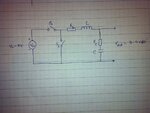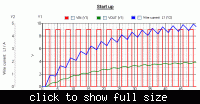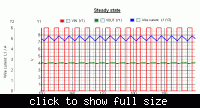prawesh2000
Junior Member level 1
- Joined
- Apr 23, 2012
- Messages
- 17
- Helped
- 1
- Reputation
- 2
- Reaction score
- 1
- Trophy points
- 1,283
- Location
- Ronneby, Sweden
- Activity points
- 1,407

Above is the design of the buck converter I am supposed to design. The given are:
Input voltage (Vin): 9 V
Output voltage (Vout): 3-4 V
Load current (Iload): 5 A
Switching frequency (Fsw): 330 KHz
Ripple voltage (Vripple): 5%
Ripple current (Iripple): 10%
Can anyone help me find the values of the inductor 'L', it's resistance 'RL', capacitor 'C', it's resistance 'Rc'?
Also, I need the values of Ton, Toff, RDson, RDsoff for both the switches S1 and S2.
I am stuck with the values and as soon as I have them, I can plug them in my simulink model and simulate the system. So, please help me find these values.


